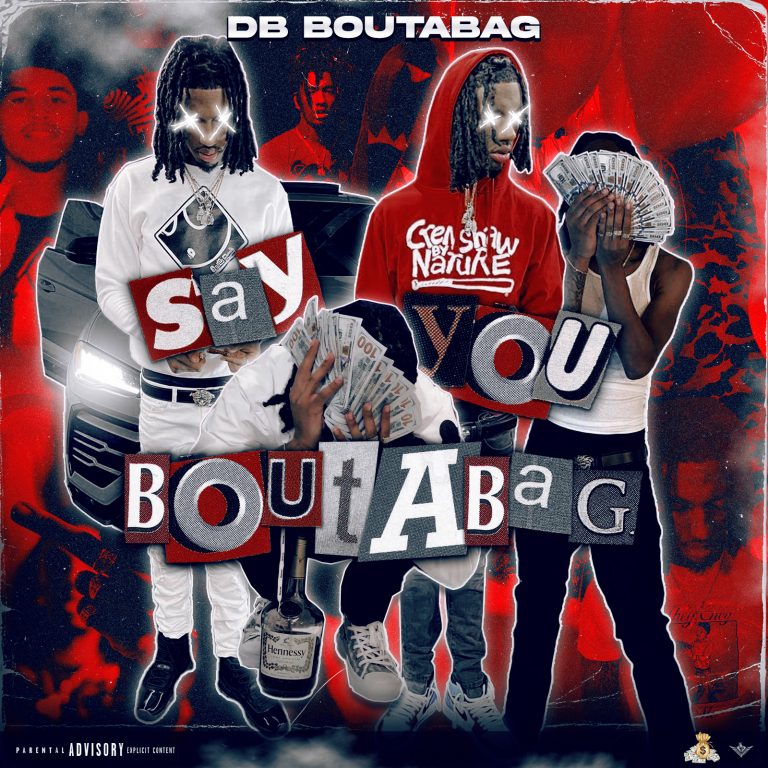AI-Generated Content
This article has been created using advanced AI technology to provide you with informative and engaging content.
AI-Curated Resources:
Ever wondered what's really going on behind the scenes with all that information you handle every day? It's almost like there's a whole world of quiet activity happening, a kind of digital whisper, you know, just beneath the surface of your computer screen. We are going to take a closer look at something we're calling "db boutabag," which is really about getting a handle on how data gets measured and stored. It’s a bit like trying to figure out the secret language of your computer's memory.
Sometimes, the way we talk about digital stuff can seem a little bit formal, like it's meant for folks who speak a special kind of code. But what if we could chat about these things in a way that feels more like a friendly conversation? That's what we're aiming for here, really, to make some of these behind-the-scenes data concepts feel a little more approachable. We'll be exploring some basic ideas that help us make sense of how data makes noise, or how it gets tucked away.
So, get ready to peek into some of the ways we measure digital signals and how information gets organized. It's a way of looking at the digital world that helps us see the patterns and the quiet hum of activity that keeps everything running. We're talking about things that might seem a little technical at first, but honestly, they’re just ways to describe how our digital tools manage all the bits and pieces of information we create and use.
Table of Contents
- What's the Buzz About db Boutabag?
- How Does db Boutabag Help Us Hear Data?
- Unpacking the Data Bag - What's Inside?
- Where Does db Boutabag Keep Its Secrets?
- Getting a Clear Picture with db Boutabag
- Can db Boutabag Help Us Tidy Up Our Data?
- Different Kinds of Data Bags - db Boutabag's Varieties
- Why Does db Boutabag Use Such Odd Measures?
What's the Buzz About db Boutabag?
When we talk about "db boutabag," part of what we're considering is how we measure things that might seem a little abstract, like sound or electrical signals. There's this unit, you know, often written as 'Db', which is basically a way to talk about how one thing compares to another. It's a relative kind of measure, meaning it shows a relationship, rather than an absolute amount. Think of it like saying something is 'twice as big' instead of saying 'it's ten pounds'. It helps us understand how much stronger or weaker something is compared to a starting point. This unit, which is a tiny piece of a larger measure called a 'bel', is used for all sorts of things, from the quiet rustle of leaves to the rumble of heavy machinery.
This 'Db' unit is also what we call a logarithmic unit. Now, that might sound a little bit math-y, but it just means it helps us describe things that can get really, really big, or really, really small, without using a ton of zeroes. For example, the difference between a whisper and a jet engine is huge, but with a logarithmic scale, we can represent that vast difference in a much more manageable way. It’s a very practical way to indicate the level of things like acoustic waves, which are sounds, and electronic signals, which are the pulses of information that travel through our devices. It helps us put a number on how loud a sound is, or how strong an electrical pulse might be.
How Does db Boutabag Help Us Hear Data?
So, how does this 'Db' idea, which is part of our "db boutabag" discussion, actually help us hear data, or at least understand its intensity? Well, it's used to show a ratio or a gain. Imagine you have a signal coming in, and then you make it stronger; the 'Db' tells you how much stronger it got. It's about measuring the relative loudness of sounds, for instance. You might see a chart that shows examples of sounds, from a very quiet 0 Db all the way up to a really loud 180 Db. That gives you a sort of frame of reference for what different sound levels feel like.
- Phone Numbers Creepy
- Matt Kaplan Net Worth
- Spiderman Sophie Rains Video Adventure Unveiled
- Linda Ronstadt Children
- Rick Hoffman Wife
This unit, often shortened to 'db', is the go-to way to talk about the relationship between two physical quantities. This is typically how much acoustic power or electric power there is. It's also used for simply measuring how loud sounds are, relative to each other. When we use these units, like 'db', to measure the intensity of a sound, it helps us compare things in a standardized way. It’s kind of a neat way to think about how our ears work, too, because the human ear is incredibly sensitive to a wide range of sound levels, and this scale mirrors that. In some respects, it helps us make sense of what our ears perceive.
Unpacking the Data Bag - What's Inside?
Moving on from the sound aspect of 'db' to the 'db' that means 'database' – this is where the "boutabag" part really comes into play, as in, what's in the bag of data? A database, in simple terms, is where information lives. It's not just a random pile of stuff; it's organized. When you're using something like SQL Server 2008 Enterprise, for example, you're interacting with one of these organized collections of information. You might want to see who's connected to it right now, you know, like who's currently pulling or pushing information.
You might also want to find out where those connections are coming from, like which IP address is linked to a particular activity. This is all part of getting a good look at what's going on inside your data's home. It's about understanding the active connections and getting all the related information that helps you keep tabs on your data. So, basically, a database is a place where all your digital bits and pieces are kept safe and sound, ready to be accessed when needed.
Where Does db Boutabag Keep Its Secrets?
So, where exactly does this "db boutabag" keep its secrets, its actual files? Well, a system like Postgres, for instance, stores all its information in files that live in a specific spot called its data directory. It’s kind of like a filing cabinet for all your digital records. If you want to go and see a particular database and the files that belong to it, there are steps you can follow to locate them. It’s pretty straightforward once you know where to look.
It's interesting to note that the database that goes with a PostgreSQL table file is actually a directory itself. So, it's not just one big file; it's a whole folder system that organizes everything. And, as a matter of fact, you'll often see files with a '.db' suffix. That '.db' part is just a short way of saying 'database'. It’s a common way to label these special files that hold all your organized information.
Getting a Clear Picture with db Boutabag
Getting a clear picture with "db boutabag" means being able to look inside and understand what's happening with your information. For instance, there's a tool called a file utility that can take a peek at the very beginning of a file. It's like checking the cover of a book to get a hint of what's inside. This kind of quick inspection can give you some initial clues about the file's nature. It’s a simple way to start making sense of things.
When you're working with a system like SQL Server, you might find yourself wanting to know how big your database is. You know, just the overall size of it. There are ways to query your SQL Server to get just that piece of information. For example, there's a command you can run, something like 'Exec sp_spaceused', and that will give you details about the space your database is taking up. It’s a pretty handy way to keep an eye on how much room your data is occupying.
Can db Boutabag Help Us Tidy Up Our Data?
So, can "db boutabag" help us tidy up our data? Absolutely. Sometimes, databases can get a bit cluttered, and you might find that you need to make them smaller, or 'shrink' them. This often happens in various client locations where there's a lot of data coming and going. I mean, I've personally come across situations where I've found and removed hundreds of thousands of records that were simply not needed anymore. It's like decluttering your digital closet, getting rid of all the old things you don't use.
Getting rid of those unneeded records is a really important step in keeping your database running smoothly. It helps free up space and can make things work a little bit faster. It’s about making sure that your database, your "db boutabag," is holding only the information that's actually useful. This kind of regular cleanup is a good practice for anyone who deals with large amounts of information, ensuring everything stays neat and efficient.
Different Kinds of Data Bags - db Boutabag's Varieties
When we talk about the different kinds of "db boutabag," we're really talking about the various types of databases out there. It might sound a little odd at first, but there are actually quite a few ways to organize information. The word 'database' itself is what 'db' stands for, and there are main categories. You have what are called 'relational databases' and then there are 'non-relational databases', which are sometimes called NoSQL databases. Each type has its own way of structuring and storing information.
Among the relational types, you'll find some big names like Oracle, MySQL, and SQL Server. These are pretty common and are used for all sorts of things where data needs to be highly organized and connected, like in a table with rows and columns. It’s a very structured way of keeping information. On the other hand, non-relational databases offer more flexibility, which can be really useful for certain kinds of data that don't fit neatly into rows and columns. They each have their strengths, depending on what kind of information you're working with.
Why Does db Boutabag Use Such Odd Measures?
So, why does "db boutabag" use such odd measures, especially when we think about those decibel units? It's a bit peculiar, isn't it? The reason is that the human ear, as mentioned before, is truly amazing in how it picks up sounds. It can hear things that are incredibly quiet and things that are incredibly loud, and it doesn't do it in a simple linear way. It’s more like a scale where each step represents a multiplication, not just an addition.
This logarithmic way of measuring, which is what the 'Db' unit is all about, helps us describe those very big differences in a way that makes sense to our perception. For example, if we were to use a simple linear scale, a small increase in sound power might seem tiny, but to our ears, it could feel like a huge jump. That’s why, in fields like electronic engineering, 'dB' is the universally accepted unit for talking about telecommunications signals. It just reflects how our senses work and helps engineers communicate about signal strength in a consistent way. It might sound a little weird, but actually it's not.
AI-Enhanced Visual Content

